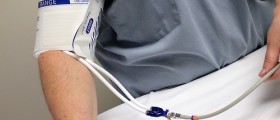
Hypertension is a serious health problem affecting the global society as a whole. With morbidity and mortality rates being very high, many health and medical facilities are doing their best to combat this disease through scientific researches, information given to the patients and raising the overall awareness of the people.
Frightening Statistics
At this moment, about 50 million people in the US are suffering from hypertension with 30% of adults being completely unaware of the existence of their condition. Moreover, 40% of the overall group of hypertension sufferers never get the necessary treatment. On the other hand, only 67% of individuals undergoing hypertension treatment manage to get their blood pressure under control.
Hypertension, when untreated or neglected, usually evolves into coronary heart disease, stroke, congestive heart failure, end-stage renal disease and peripheral vascular disease. Most of these conditions belong to the list of major killers in the US.
What is Hypertension?
Basically, every systolic blood pressure lower than 120 combined with the diastolic lower than 80 is considered to be normal. However, if these values range from 120 to 139, combined with 80 to 90, prehypertension is usually diagnosed. Stage 1 hypertension manifests through 140 to 150 systolic blood pressure and 90 to 99 diastolic one while stage 2 hypertension takes place due to a systolic pressure being equal to or above 160 and diastolic equal or higher than 100.
Yet, this can vary since not all people have the same organisms. Thus, a series of other tests need to be done in order to successfully diagnose this problem.
Prehypertension is considered to be an initial state which can be modified through lifestyle changes and medications, preventing it from advancing into more serious variants of hypertension. Also, if an underlying cause is triggering hypertension, it is named secondary. Therefore, essential hypertension has no secondary cause, being the most common variant of this illness.
As hypertension evolves into more serious cases, it can further be categorized as a hypertensive urgency. This condition is defined as having blood pressure above 180/110, accompanied with headaches and dyspnea. Furthermore, suffering from blood pressure higher than 220/140 is considered to be life-threatening, named hypertensive emergency.
Hypertensive Emergency
This condition leads to numerous organ damage and serious health problems which can be neurologic, like encepalopathy, cerebral infarction, intracranial hemorrage or other such conditions, cardiovascular, as a heart attack, ventricular dysfunction, pulmonary edema and others and some additional conditions like acute renal failure, retinopathy, eclampsia etc.
Hypertensive emergency usually takes place due to escalation of common hypertension or due to drug abuse, clonidine withdrawal, post pheochromocytoma removal and systemic sclerosis.

















Your thoughts on this
Loading...